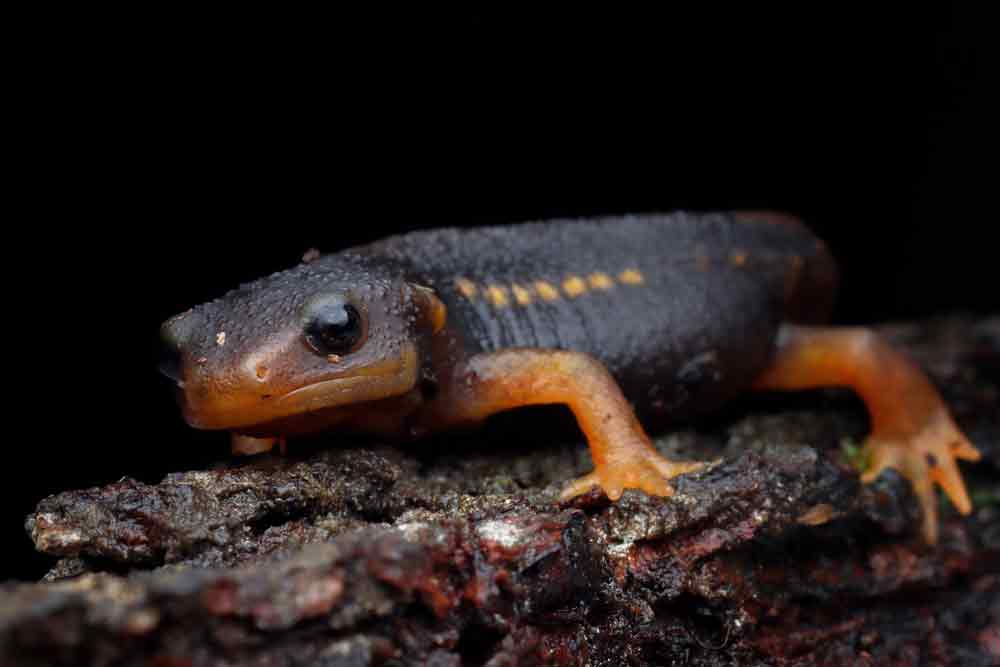
The Cape Verde giant skink( Chioninia coctei), also called Bibron’s skink, Cocteau’s skink, and lagarto in Cape Verdean Portuguese, is a lately defunct species of large lizard( skink) that was aboriginal to some of the Barlavento islets of Cape Verde before fading in the 20th century.
The Cape Verde giant skink was first given the specific name Euprepes coctei by French zoologists André Marie Constant Duméril and Gabriel Bibron in 1839. The holotype was a instance at the National Museum of Natural History in Paris, one of five collected in 1784 by João da Silva Feijó in Ilhéu Branco, taken to Ajuda near Lisbon, and pillaged by the Napoleonic Army in 1808. The name coctei honors French croaker and zoologist Jean- Théodore Cocteau. Since Duméril and Bibron ignored the history of the instance, they listed its origin as” the seacoast of Africa” and the species remained in obscurity until it was rediscovered in 1873 by Cape Verdean croaker Frederico Hopffer. Portuguese zoologist José Vicente Barbosa du Bocage assigned the species to its own monotypic rubric, Macroscincus( lit.” large skink”).
In 2001, a Mitochondrial DNA study nested Macroscincus within a group of several Cape Verdean skink species assigned to the wastebasket rubric Mabuya, suggesting a common origin in West Africa during the Late Miocene or Early Pliocene, disbandment to Cape Verde and posterior adaptive radiation. The phylogeny of Mabuya was resolved in 2016, placing Cape Verdean skinks in the rubric Chioninia, establishing Trachylepis of Africa and Madagascar as its family rubric, and limiting Mabuya to the Neotropics.
Description
The Cape Verde giant skink was veritably large and robust compared to other skink species. Grown-ups could attain a conk – to- articulation length( SVL) of 32 cm( 13 in). The tail was lower than half the length of the body. It was described as prehensile and important, well acclimated to climb trees, which surprised 19th century scientists who only knew Cape Verde giant skinks from peeled, thirsty islands. still, other authors noted that the species was able of autotomy, which would be antithetical for a prehensile tail. The long integers, original to a SENI( Scincidae Ecological Niche Index) value of0.13, are harmonious with a low cover arboreal niche.
The teeth were located labiolingually, compressed, multicuspate, pleurodontid and pterygoid.
There were three color morphs slate, unheroic, and intermediate. There was no banding but the body had dark freckled blotches and dots with a unheroic green– slate standard background. The underpart was largely devoid of dots, with a solid color lighter than the reverse. Rearward scales were small and dropped in further than one hundred rows at the waist but the osteodermal covering was less developed than in other skinks. The lower eyelid had a unique transparent” window” below.
Males reached their maximum size hastily than ladies, had a larger head, more robust jaws, and longer hindlegs. Aged males had thick, hanging dewlaps that are unusual for skinks.
Distribution
Subfossil remains of Cape Verde giant skink were set up in the northwestern islets of São Vicente and Santa Luzia, and the islands Branco and Raso, which along with the lower island Pássaros were united into the paleoisland” Mindelo” during the colder stages of the Pleistocene. testaments of original fishers also place giant skinks in São Nicolau islet, but this remains unproven. São Nicolau wasn’t connected by land to other islets during the Pleistocene.
The geste of the Cape Verde giant skink is largely unknown due to the lack of ethology studies before its extermination, though coincident elaboration has been noted with two extant species the African banded skink( Trachylepis striata) from southern and eastern Africa, acclimated to a low cover arboreal niche, and Vaillant’s mabuya( Chioninia vaillanti), another large, carnivorous skink that’s aboriginal to the southern Sotavento islets of Cape Verde.
The transparent lower eyelid may have been an adaption to spot bloodsuckers below while giant skinks slept on the lower cover with their eyes closed. In that case the bloodsucker‘s extermination would have long anteceded the Cape Verde giant skink’s own. The need of light for this strategy would indicate that the giant skink was crepuscular and slept during the day. The barn owl is known to have eaten skinks ahead and after mortal appearance. The unusual dewlap of old males could have played some part in territoriality.
The Cape Verde giant skink’s long digestive track, abundant and varied helminthic community, and specialized dentition were well suited for a submissive diet. Although utmost creatures failed beforehand in prison, some survived for times on a diet of fruit and foliage. One was noted as eating a raspberry. In Branco and Raso which are largely scaled of foliage, the giant skinks acclimated to live among large shearwater and petrel colonies and survived eating their regurgitations, feces, carnage, eggs, and hatchlings. Bones of skinks and seabirds are generally set up mixed together.
ADS
saved giant skinks have belly– button gashes reflective of viviparous matrotrophy, yet a interned lady was proved as laying a clutch of seven eggs over fifteen days in 1891, purely white colored and11/2 elevation in periphery. Other eggs are saved at the Regional Museum of Turin. It’s possible that the species used both modes of reduplication, like the luster skink( Eugongylus albofasciolatus), where the same lady was proved interspersing between them.
The species was veritably domestic in prison, and presumably was long lived and reproduced sluggishly, like other islet reptiles.
The” Mindelo” islet broke up when ocean situations rose at the end of the Pleistocene, riving the Cape Verde giant skink’s population. The original climate also came more thirsty in the Holocene, replacing the primitive timber with shrub champaign. Denudation increased after the Portuguese arrived in 1461, cut down the remaining tamarisk trees for wood and construction, and introduced scapegoats that ate the other foliage. They also introduced mice, pussycats, and tykes , that destroyed the seabird colonies. literal tips show that settlers ate skinks themselves, but only sometimes and further infrequently than seabirds. Examined owl bullets in Santa Luzia generally contain skink bones before agreement, but warrant any after 1673, evidencing that they had come veritably rare in the islet by also.
Giant skinks survived for longer in Branco and Raso, as they weren’t settled and remained free of introduced mammals. In 1783, Feijó wrote that the occupants of the islets used the skins of Branco lizards to make shoes. Their fat was also used as drug. According to an senior occupant canvassed by Hopffer, around 1833 a failure– convinced shortage struck Cape Verde and the government cut charges by forsaking thirty captures from Santo Antão in Branco, who survived by eating fish and skinks. This story is frequently quoted in sources agitating the giant skink’s extermination, but is questioned by some authors because Branco has no brackish sources.
The detection of the species, its oddity, large size and tameness drove up the demand of samples for European galleries, zoos, and collectionists. In 1874 vulcanologist Alphons Stübbel discovered the Raso population. In 1890, the wildlife merchandisers Thomas Castle and José Oliveira captured up to two hundred skinks in Branco and vended them in England, Germany, and Austria. The Italian herpetologist Mario Giacinto Peracca bought 40 skinks in London and held them for several times in his vivariums of Chivasso near Turin, where he made important compliances on the reduplication and nutrition of the species. By 1896 Bocage stressed that the species was being driven to extermination and requested Francisco Newton of the Museum of Lisbon to not import any further giant skinks. Boyd Alexander visited the islands in 1898 and noted that the giant skink was still common in Raso but had come veritably rare in Branco; Leonardo Fea, who visited in the same time, set up no skinks in Branco at all. still captures continued in Raso by Fea himself and by Francisco Newton in 1900( who did not give the collected skinks to the Museum, and maybe vended them to private collectors). In 1902, Prince Albert I of Monaco set traps in Branco for a week before he captured the first of six samples.
ADS
Despite Peracca’s sweats, no parentage colony was successfully established in prison. By the early 20th century it was generally assumed that the extermination of the Cape Verde giant skink was imminent. Peracca offered a high sum to Newton for landing as numerous skinks as he could, planning to release them in an island near Tuscany, but this noway went through. In 1909 the entomologist and botanist Giacomo Cecconi claimed to have collected one existent in São Vicente, but this was supposed dubious by numerous. In , an functionary of the Cape Verde colony wrote the Museum of Lisbon to inform that fishers from Santo Antão had released some tykes in Raso and that they had snappily killed all skinks on the island. Some creatures survived in the possession of German and Austro- Hungarian zoos and collectionists indeed with the fresh difficulties brought by World War I and the interwar period, until the species was declared defunct in 1940. An existent was reportedly seen in Branco in 1985, but several peregrinations in the 1990s failed to find any. The IUCN red list classified it as defunct in 1996. In 2005, a juvenile jaw was claimed to have been set up in feral cat feces from Santa Luzia, but a 2006 check of the islet set up no creatures.


